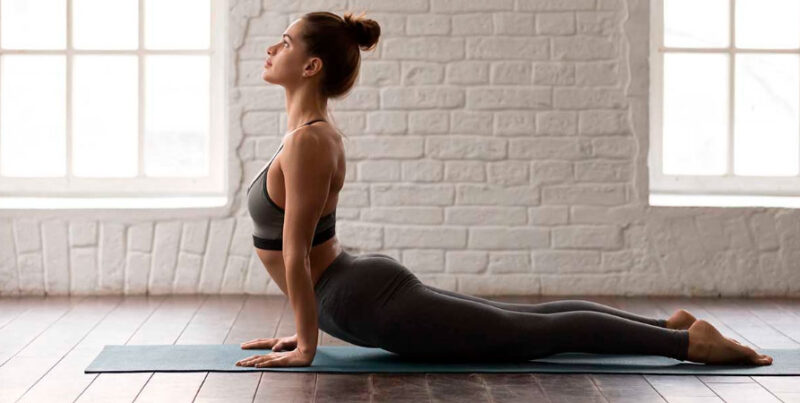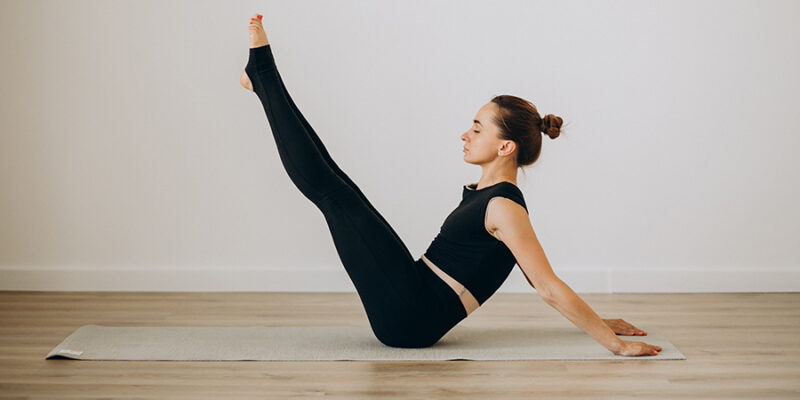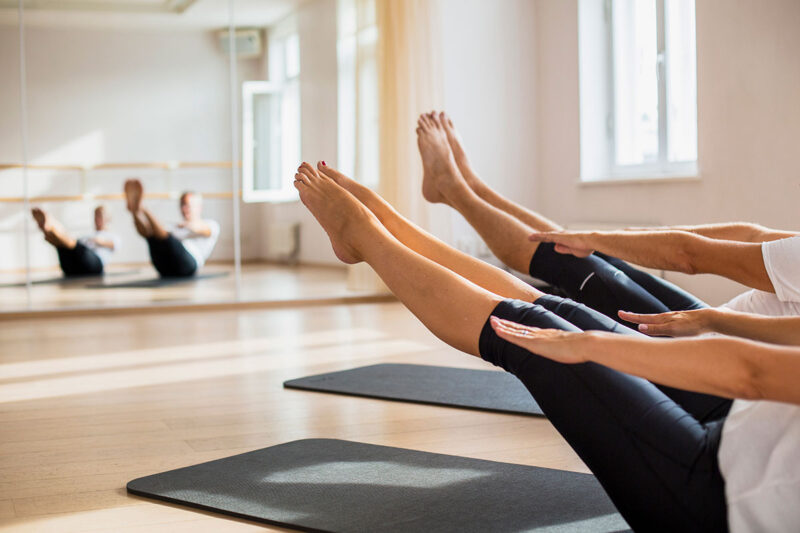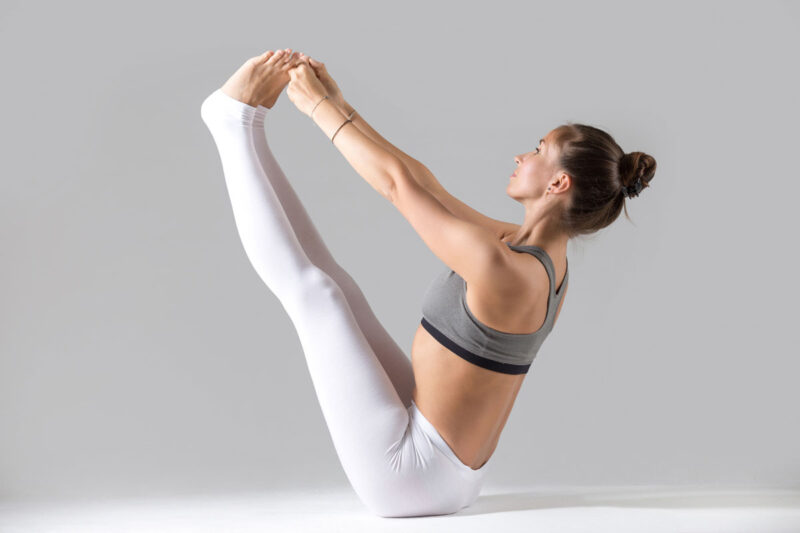1. What is Pilates?
Pilates is a form of exercise that focuses on strengthening the core muscles, improving flexibility and balance, while promoting muscular endurance and overall body conditioning. It was developed in the early 20th century by Joseph Pilates and emphasizes controlled movements, proper breathing, and body alignment. Pilates exercises can be done using a mat or specialized equipment such as a reformer, Cadillac or chair. It’s often used as a form of rehabilitation for injuries and is also popular among athletes and dancers as a way to improve their performance.
2. How does Pilates work?
Pilates is a form of exercise that focuses on building core strength, flexibility, and balance. The method was developed by Joseph Pilates in the early 20th century and has gained popularity around the world.
Pilates exercises involve controlled movements that engage the deep muscles of the abdomen and back, as well as other muscles throughout the body. The exercises are typically performed on a mat or using specialized equipment, such as a reformer or Cadillac.
The goal of Pilates is to create a strong, stable core that supports the entire body during movement. This can lead to improved posture, reduced back pain, and increased flexibility and range of motion.
Pilates also emphasizes breathing techniques and mindful movement, which can help to reduce stress and improve overall mental and physical wellbeing.
Overall, Pilates works by strengthening the core muscles, improving balance and flexibility, and promoting mindful movement and body awareness.

3. What are the benefits of Pilates?
- Improved flexibility and balance: Pilates can help to improve your balance, coordination and flexibility. The exercises aim to stretch your muscles and joints, which can lead to improved range of motion.
- Strengthening of core muscles: Pilates focuses on strengthening the deep core muscles that support your spine, thereby reducing back pain risk and improving posture.
- Reduced stress and anxiety: The breathing techniques used during Pilates can help you relax and reduce stress and anxiety levels.
- Improved posture: Pilates helps align your body, which improves your posture and reduces strain to the neck, shoulders and lower back.
- Low-impact exercise: Pilates is a gentle, low-impact exercise that benefits individuals with joint problems, arthritis or those recovering from an injury.
- Increased muscle tone and strength: Pilates works all major muscle groups, helping to increase muscle tone and strength.
- Improved overall fitness: By working on balance, strength and flexibility, Pilates can benefit your overall fitness and well-being.
- Enhanced concentration and body awareness: Pilates encourages mindful movement, which fosters increased concentration and body awareness.
- Injury prevention: Pilates strengthens your body and enhances your ability to move correctly, which reduces your risk of injuries.
- Suitable for all ages and fitness levels: Pilates can be adapted for individuals of all ages and fitness levels, making it a versatile option for anyone looking to improve their physical health.

4. Is Pilates a good workout for weight loss?
Pilates can be a good workout for weight loss. While it may not burn as many calories as some high-intensity exercises like running or cycling, Pilates can still be an effective way to lose weight through increased muscle tone, improved flexibility, and better posture. Additionally, Pilates workouts can help reduce stress and improve overall wellness, which can also contribute to weight loss. As with any workout routine, consistency and healthy eating habits are key to seeing results. It’s recommended to combine Pilates with a healthy diet and regular cardio exercise for optimal weight loss results.
5. Can anyone do Pilates?
Pilates is a low-impact workout that can be modified to accommodate various fitness levels, ages, and health conditions. However, it is advisable to consult with a doctor before starting any new exercise routine, especially if you have a pre-existing medical condition or injury. Additionally, beginners may benefit from taking classes with a qualified Pilates instructor who can teach proper form and technique to prevent injury and maximize the benefits of the workout.
6. What equipment do I need for Pilates?
The following equipment is commonly used in Pilates:
1. Pilates mat: A thick, padded mat that provides cushioning and support for your body
2. Resistance bands: Stretchy bands that add resistance to your movements and help you build strength
3. Pilates ball: A small inflatable ball that can be placed under different parts of your body to add support or challenge
4. Pilates ring: Also known as a magic circle, this circular resistance tool can be used for strengthening exercises and targeted muscle work
5. Foam roller: A long cylinder-shaped foam that helps you stretch and release tension in your muscles
6. Pilates equipment: Reformer, Cadillac or Trappeze, Chair or Tower – these are larger pieces of equipment that are used in a class setting or studio, but can also be found in some home settings.
It’s important to note that not all of these items are necessary for a Pilates practice. Beginners can start with just a mat and resistance band, and as they progress, they can add in other equipment to further challenge themselves.

7. What are the different types of Pilates?
- Classical Pilates: This is the original form of Pilates that was developed by Joseph Pilates himself. It involves a series of precise movements that target specific muscle groups and focuses on strengthening the core.
- Contemporary Pilates: This form of Pilates has evolved over time and incorporates elements of other fitness disciplines like yoga, dance, and physical therapy. Contemporary Pilates may use props like bands, balls, and rollers to add variety to workouts.
- Reformer Pilates: Reformer Pilates is done using a specially designed piece of equipment called a Pilates reformer. This machine allows for a wider range of exercises and targets different muscle groups than mat-based Pilates.
- Mat Pilates: This is the most common type of Pilates and involves a series of exercises done on a mat without any equipment. Mat Pilates typically focuses on developing strength, flexibility, balance, and coordination.
- Clinical Pilates: This type of Pilates is used in rehabilitation settings to help people recover from injuries or manage chronic pain. Clinical Pilates is often customized for each individual’s specific needs and goals.
8. How often should I do Pilates?
The frequency of your Pilates practice depends on your individual goals, fitness level, and schedule. However, as a general guideline, it is recommended to practice Pilates at least 2-3 times per week to see results.
If you are new to Pilates or returning after a break, it’s best to start with one or two sessions per week and gradually increase the frequency as you build strength and endurance. It’s also important to listen to your body and not push yourself too hard, especially if you are recovering from an injury or have any physical limitations.
If your goal is to improve your overall fitness and well-being, 2-3 sessions per week can help you achieve that. However, if you are training for a specific event or have a particular fitness goal in mind, you may need to practice Pilates more frequently, depending on your training plan.
Ultimately, the most important thing is to find a routine that works for you and that you enjoy. Consistency is key when it comes to Pilates or any other exercise program, so aim to make it a regular part of your schedule.

9. Can Pilates help with back pain?
Yes, Pilates can be an effective way to alleviate back pain. Pilates exercises focus on improving core strength, flexibility, and posture, which can help reduce stress and strain on the back.
Pilates exercises target the muscles that support the spine, including the deep abdominal muscles, hip muscles, and lower back muscles. These exercises can help strengthen these muscles and improve their ability to support the spine, which can reduce back pain.
Pilates can also improve flexibility and range of motion, which can reduce stiffness and tension in the back. The focus on proper alignment and posture in Pilates can also help reduce the risk of future back pain by promoting proper spinal alignment and reducing stress on the back.
It’s important to note that if you have severe or chronic back pain, it’s important to consult with a healthcare professional before starting any exercise program, including Pilates. They can help determine if Pilates is a safe and appropriate form of exercise for your condition and provide guidance on modifications that may be necessary to avoid further injury.
10. How long does it take to see results from Pilates?
The length of time it takes to see results from Pilates can vary depending on several factors, including the frequency and intensity of your Pilates practice, your individual goals, and your current fitness level.
With consistent practice, you can start to feel the benefits of Pilates within a few weeks, such as improved flexibility, better posture, and increased core strength. However, it may take longer, typically 6-12 weeks, to see significant changes in your body shape and muscle tone.
The speed of your progress will also depend on the frequency of your Pilates practice. Practicing Pilates regularly, ideally at least 2-3 times a week, can help you see results more quickly than practicing less frequently.
It’s important to note that the results of Pilates will also depend on your individual goals. For example, if your goal is to improve your posture or alleviate back pain, you may see results more quickly than if your goal is to build muscle mass or improve cardiovascular fitness.
Ultimately, consistency and dedication to your Pilates practice will be key to seeing results. It’s also important to be patient and focus on the positive changes you feel in your body and mind, rather than solely on physical results.
11. Is there a privacy policy?
Yes, we respect your privacy and are committed to maintaining it. For more information on our privacy policy, see our privacy policy section.
Have other questions not answered by our Pilates FAQ? Just call or send a note to info@pilatesequipment.fitness

